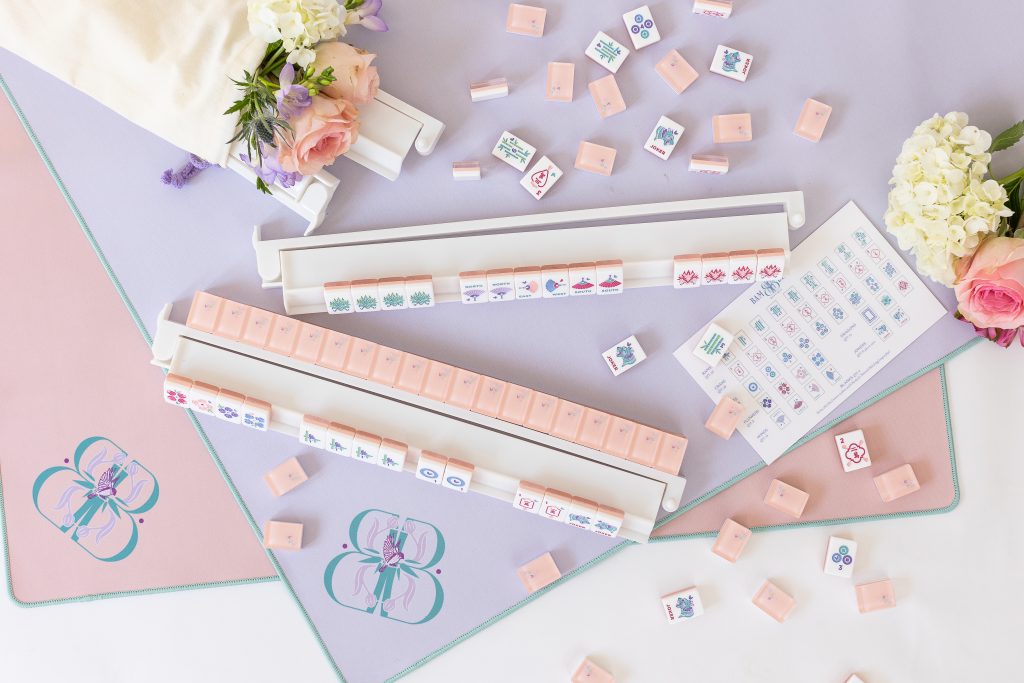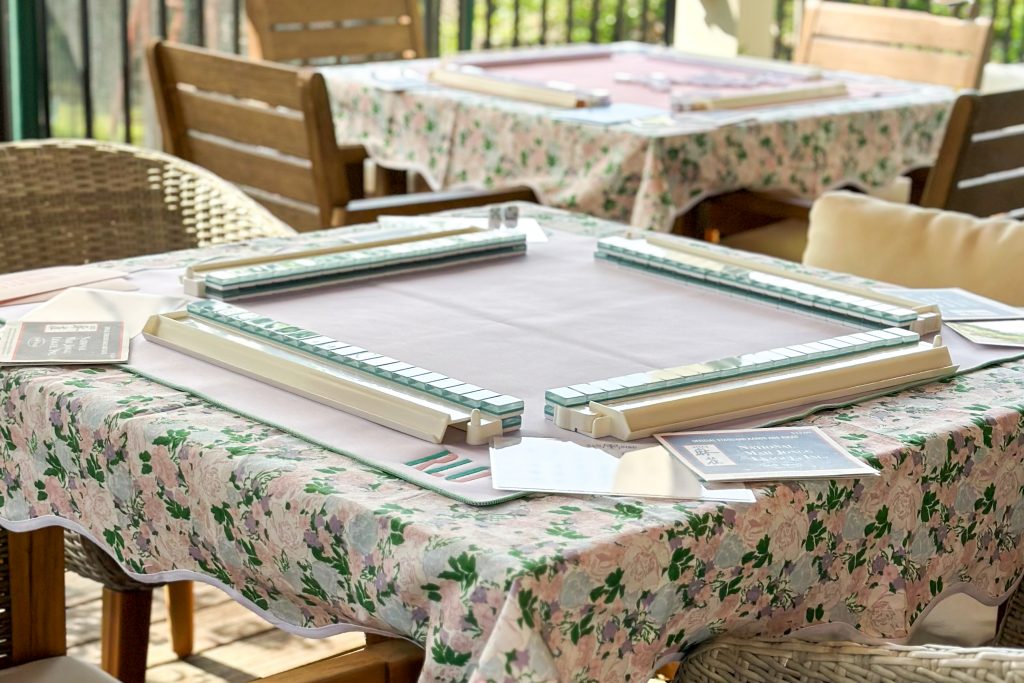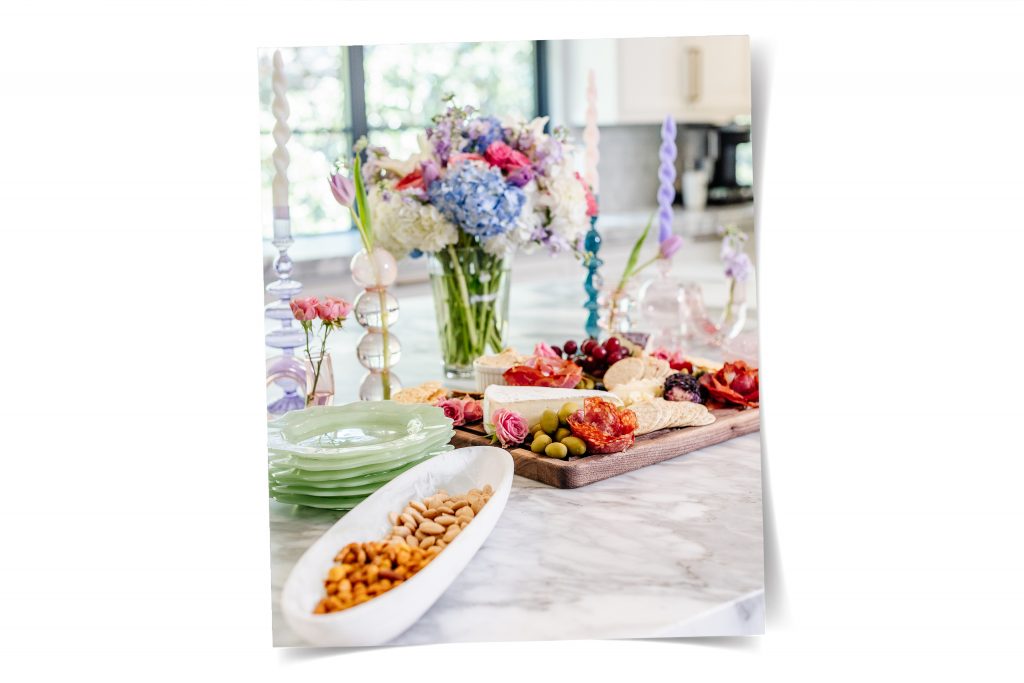Mahjong Is Having a Moment
Mahjong is a strategy game similar to rummy, except players use tiles instead of cards. Men in elite, urban communities in China during the 1800s played one another for cash. However, money wasn’t the biggest draw for mahjong — it was the opportunity to socialize. To be invited to play mahjong was considered an extension of kinship or acceptance. By the 1920s, exporters and businessmen helped bring mahjong — and, for that matter, mahjong culture — to international audiences.
Today, mahjong is still gaining incredible popularity, especially with women. There’s a lot to love about mahjong; it’s a game of both chance and skill, which exercises our brains, as well as an opportunity to foster comradery (and friendly competition) amongst friends.

How to Play Mahjong
Today, there are many variations of mahjong around the world. For the sake of simplicity, this article will focus on the American version.
What You Need:
- Four players
- A pair of dice
- Mahjong tile set with four racks
The Objective: To get a “mahjong,” which is when all 14 of your tiles create four sets and one pair. A pair is two identical tiles. A set can either be three identical tiles or a run of three consecutive numbers in the same suit.
About Tiles: Mahjong sets typically come with 136 tiles, and just like a deck of cards, the tiles have suits. The three suits are dots, Chinese characters, and bamboo. Each suit has four identical sets of nine consecutively numbered tiles. Sets also include 16 wind tiles (four each for east, south, west, and north) and 12 dragon tiles.

Gameplay
Setup: First, roll the dice to determine the dealer. Then, shuffle the tiles facedown. (Fun fact: The word “mahjong” means “sparrow,” referring to the sound of the tiles clacking when shuffled together.) Have each player build a line of 34 facedown tiles in front of themselves. (Seventeen tiles long, two tiles high.)
The dealer rolls the dice. Then, count that many tiles from the right edge of their wall. At that point, the dealer separates the wall and begins dealing tiles clockwise from that spot. In total, each player receives 13 tiles, with the dealer starting with an extra 14th tile.
Each player arranges their tiles on racks so only they can see their hand. The dealer discards one tile. Then, play begins to the left.
Play: Before your turn, the other players can claim the most recently discarded tile. Priority is given to any player who can claim “mahjong” (a winning hand of 14 tiles).
If no player claims mahjong, any player can claim the tile to complete a “pung” (two tiles that exactly match that discard). After the player turns the pung tiles face up, they get to discard a different tile. The player to the right goes next.
If no player claims mahjong or pung, players can claim a “chow.” (This is what you call a run of tiles in a single suit. Example: four, five, and six of dots.) Then, discard a different tile and pass the turn to the right.
If you can’t complete a set with the discard on your turn, draw the next tile from the line of facedown tiles, moving left. Then, unless you can claim mahjong, you discard another tile faceup.
Winning: The hand ends when a player declares mahjong and reveals their tiles. If no one calls mahjong by the time the wall runs out of tiles, it’s a draw.
The most basic scoring technique is to play for a predetermined number of hands or a maximum number of points. Award one point per hand to whoever achieved mahjong. Whoever has the most points at the end of the mahjong tournament wins.

Hosting Your Own Mahjong Meetup
Hosting a mahjong party can be a wonderful way to bring family and friends together for an evening of gentle rivalry and fun. Here are a few tips:
- Give guests a heads-up on which version you’ll be playing to avoid confusion over the rules.
- Prioritize comfortable seating. Mahjong can take a few hours, so comfort is key.
- Set aside time for pregame tutorials and practice rounds for guests new to mahjong.
- Serve easy-to-eat finger foods, appetizers, and beverages.
- Plan for short breaks to refresh and socialize away from the table.
In an age with increasingly complicated Pinterest-inspired parties, mahjong requires refreshingly little preparation. All you really need is a tile set, a few good friends, and a healthy competitive spirit!
After exploring party games of the East, try a game night that’s all about the West. The Wild West, that is!
© 2024 Texas Farm Bureau Insurance



